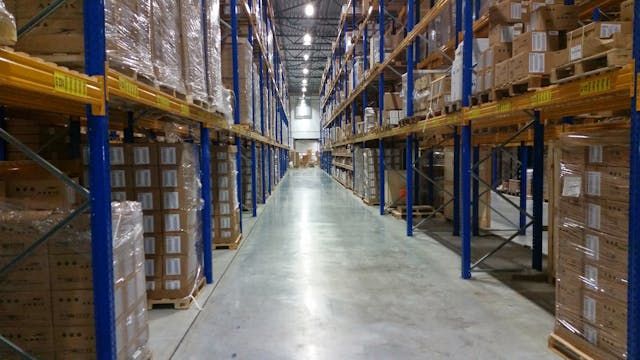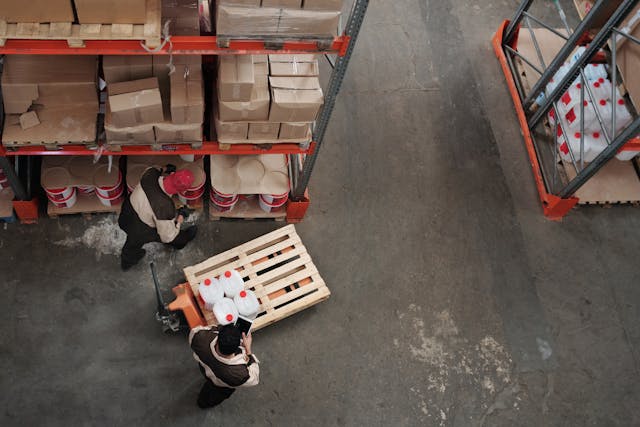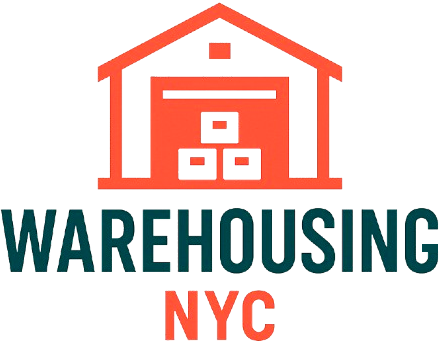As businesses grow, managing logistics in-house can become costly and complex. Third-party logistics warehousing providers help by offering expert services that streamline operations, reduce overhead, and support supply chain efficiency.
To make the most of this partnership, it’s important to know what services and standards to expect. Here are key things to look for in a third-party logistics warehousing provider
Table of Contents
Key Takeaways
✔ Expect adaptable storage options that can scale with changing product volumes and business needs.
✔ Expect accurate, real-time inventory tracking that reduces errors and supports smooth operations.
✔ Expect a seamless connection between warehousing and broader logistics services for end-to-end efficiency.
✔ Expect fulfillment processes powered by advanced technology for faster and more accurate order handling.
✔ Expect warehouse locations chosen to shorten delivery times and improve regional coverage.
✔ Expect secure storage environments and professional handling that protect inventory and maintain order accuracy.
What to Expect from a Reliable Third-Party Logistics Warehousing Partner

1. Flexible Storage Solutions
A reliable third-party logistics warehousing provider offers flexible storage solutions designed to grow and shift with business needs. These storage systems are built to handle a wide variety of product types and order volumes, helping companies stay organized, efficient, and ready for changes in demand.
Adaptable for Different Product Types
Every product has different storage requirements, and the warehouse layout must support these needs to ensure safe handling and efficient access.
- Scalable Storage Configurations: Warehouses offer different storage formats, including shelving, pallet racking, and bin locations, all designed to suit specific product dimensions and volumes. This setup supports everything from small items to oversized goods.
- Specialized Handling Capabilities: Some products require special care—such as temperature control, humidity regulation, or secure access. Reputable providers have designated zones to handle these requirements safely and in compliance with regulations.
Seasonal and Promotional Flexibility
Business cycles often bring peaks and dips in inventory needs, and storage capacity must keep up without delay or extra hassle.
- Short-Term Surge Storage: During high-demand periods like holidays or promotional events, warehouses can quickly provide additional space to store increased inventory. This avoids overloading internal stockrooms or delaying shipments.
- Long-Term Storage Options: For slow-moving or bulk-purchased products, long-term storage solutions allow companies to keep extra stock on hand without paying for prime or premium space.
- Quick Inventory Adjustments: With dynamic space management and strong inventory management and storage systems, providers help businesses adjust stock levels quickly as demand shifts—ensuring product availability without overstocking.
Support Through Integrated 3PL Services
Flexible storage works best when it’s integrated into a broader logistics framework that connects inventory, fulfillment, and delivery.
- Connected Fulfillment Services: Warehouses that offer 3PL warehouse management services can handle the full process—from receiving goods to picking, packing, and shipping—directly from the storage location. This reduces delays and manual handling.
- Real-Time Visibility: Using advanced tracking tools common in third-party fulfillment centers, businesses gain real-time insights into stock levels, item locations, and movement history. This improves decision-making and reduces errors.
- End-to-End Logistics Coordination: Storage is just one part of a wider system. Through outsourced warehouse and distribution services, all logistics steps—from inbound freight to last-mile delivery—are aligned, saving time and reducing costs.
2. Advanced Inventory Management
Accurate inventory management is critical for avoiding delays, reducing costs, and maintaining strong customer satisfaction. A reliable third-party logistics warehousing provider uses advanced systems to give businesses complete visibility and control over their stock—no matter how many sales channels or locations they manage.
Real-Time Tracking Across All Channels
With modern systems, inventory is monitored as it moves through every stage—from receiving and storage to picking and shipping.
- Live Inventory Updates: As soon as products are received, shipped, or restocked, the system reflects these changes in real time. This minimizes overselling, reduces stock discrepancies, and keeps sales platforms accurate.
- Channel-Wide Visibility: Businesses operating on platforms like Shopify, Amazon, or retail locations can view all inventory activity from one centralized dashboard. This improves decision-making and avoids double-selling or stockouts.
- Error Reduction: Automated tracking reduces reliance on manual data entry, which is prone to mistakes. This results in more consistent stock counts and fewer order issues, improving customer experience.
Smart Inventory Optimization
Storing too much inventory increases costs, while storing too little leads to missed sales. Smart inventory optimization strikes the right balance.
- Data-Driven Forecasting: Providers use historical sales patterns, market trends, and seasonality to predict demand. This helps businesses maintain ideal stock levels without tying up too much capital in unsold goods.
- Stock Replenishment Alerts: Automated systems send alerts when stock levels reach minimum thresholds. This gives businesses time to restock before running out, preventing disruptions in sales.
- Storage Efficiency: Inventory is organized by demand frequency and turnover rates. High-demand items are kept more accessible, reducing picking times and speeding up fulfillment.
3. Seamless Integration with 3PL Services
A dependable third-party logistics warehousing provider ensures that all systems are connected to support smooth, end-to-end operations. Seamless integration helps eliminate gaps between inventory, order processing, shipping, and returns—allowing businesses to run more efficiently and focus on growth. This is especially important when working with multiple sales channels or managing a high volume of orders.
Connected Operations Across the Supply Chain
Integrated third-party fulfillment centers allow every part of the logistics process to communicate in real time, which improves speed and accuracy.
- Order Processing Sync: Orders from eCommerce platforms or retail systems flow directly into the warehouse system, triggering picking, packing, and shipping automatically—without the need for manual input.
- Returns Management: Returns are processed through a unified system that simplifies tracking, restocking, and issuing refunds, leading to faster resolution and better customer service. With an average eCommerce return rate of 16.9% in 2024—nearly 17 out of every 100 items sold—efficient returns management is critical to minimizing delays and keeping operations smooth.
- Multi-System Compatibility: Leading third-party fulfillment centers connect with popular platforms like Shopify, Amazon, ERP systems, and custom tools, ensuring data flows smoothly between sales, inventory, and logistics.
Support for Full-Service Logistics
Integration extends beyond inventory and orders—it supports a full-service approach to logistics that simplifies operations.
- Inventory and Fulfillment Coordination: Real-time updates between inventory management and storage systems and fulfillment teams help ensure products are available when needed, preventing delays and overselling.
- Shipping Automation: Orders are automatically assigned to carriers based on factors like location, shipping method, and cost, reducing the risk of human error and speeding up delivery timelines.
- Data-Driven Decision Making: Integrated reporting tools provide insights into sales trends, inventory turnover, and delivery performance, helping businesses make smarter decisions.
Scalable and Efficient Infrastructure
A well-integrated logistics setup can grow with the business, offering the flexibility needed to adapt to changing demands.
- Support for Growth: As order volumes rise, businesses can rely on their outsourced warehouse and distribution partner to scale up operations without sacrificing accuracy or speed.
- Reliable System Uptime: Integrated systems are designed for stability and reliability, ensuring minimal downtime during busy seasons or large promotions.
- Custom Integration Options: Top providers of 3PL warehouse management services offer customized solutions that fit the unique workflows and tools of each business, whether they operate in retail, wholesale, or eCommerce.

4. Technology-Driven Fulfillment
Technology is at the heart of how third-party logistics warehousing providers operate today. With advanced systems in place, providers can manage inventory more accurately, fulfill orders faster, and scale operations efficiently. This tech-driven approach not only improves speed and accuracy but also gives businesses more visibility into their supply chain.
Smart Inventory Control
Accurate inventory management and storage control depends on reliable, real-time data—and technology makes that possible.
- Low Stock Alerts and Forecasting: Intelligent software monitors inventory levels and notifies warehouse teams or businesses when items are running low. Predictive analytics also support future demand planning, reducing both stockouts and overstock.
- Accurate Data for Planning: With up-to-date, detailed inventory data, businesses can plan purchases, product launches, and marketing strategies more effectively, reducing waste and improving profitability.
Automated Order Fulfillment
Automation speeds up every step of the order process and reduces reliance on manual labor.
- Barcode and RFID Scanning: Each item is tracked using barcodes or RFID tags, which improve order accuracy and ensure the correct products are picked and packed for shipment.
- Optimized Pick Paths: Warehouse management software calculates the most efficient picking routes, allowing workers to gather items quickly with minimal backtracking. This reduces labor time and improves order turnaround.
- Faster Shipping Integration: Once an order is packed, the system communicates directly with shipping carriers, prints labels, and updates tracking—shortening the time it takes to get products out the door.
Integration With Business Systems
Technology bridges the gap between the warehouse and the rest of the business, creating a connected and efficient workflow.
- Multi-Platform Syncing: Inventory is updated automatically across online stores, retail locations, and marketplaces, reducing overselling and customer service issues.
- Smooth Data Flow: Integration between warehouse systems and order management tools eliminates the need for manual data entry, reducing errors and saving time.
- Customizable Dashboards: Many third-party fulfillment centers offer user-friendly dashboards that display real-time data on inventory management and storage, orders, and shipments, giving businesses full control and visibility.
5. Strategically Located Warehouses
One of the most valuable features of a third-party logistics warehousing provider is the ability to access a network of strategically placed warehouse facilities. These locations are selected to improve delivery speed, reduce transportation costs, and help businesses serve customers across more regions efficiently.
Improved Reach and Faster Delivery
Warehouse locations have a direct impact on how quickly and affordably products reach the end customer.
- Reduced Shipping Zones: By storing products closer to the final delivery point, businesses can ship to customers in fewer zones, resulting in lower costs and quicker transit times.
- Coverage Across Key Markets: Strategically distributed locations allow businesses to expand their reach into new regions without the need for additional infrastructure.
- Better Carrier Access: Many warehouses are near major highways, ports, or airports, making it easier to access national and international shipping routes.
Operational Efficiency Through Location
Well-placed facilities don’t just benefit shipping—they improve the overall flow of the supply chain.
- Faster Order Turnaround: Orders are picked, packed, and shipped from the nearest warehouse location to reduce delays and improve delivery speed—an important factor, as 89% of consumers are more likely to make another purchase after a positive customer service experience.
- Optimized Route Planning: Providers leverage logistics software to determine the best shipping paths, further cutting down delivery time and fuel usage.
- Lower Return Handling Time: Returns are processed more efficiently when warehouses are close to customer bases, supporting faster restocking or refunds.
6. Secure and Efficient Handling
Safe and timely handling of products is essential in any supply chain. A trusted third-party logistics warehousing provider ensures that goods are stored in secure environments and moved through the distribution process with speed and precision. This not only protects inventory but also keeps customers satisfied through consistent and reliable deliveries.
Secure Inventory Storage and Handling
Security measures are a top priority in any modern warehouse environment, protecting goods from loss, damage, or theft. A dependable system not only ensures product safety but also reinforces confidence in supply chain operations.
- Damage Prevention Measures: Products are stored based on specific requirements such as size, fragility, or temperature sensitivity, helping to avoid issues like spoilage, deformation, or breakage throughout the storage period.
- Trained Warehouse Staff: Skilled handling teams are trained in product-specific procedures, ensuring items are properly received, labeled, stored, and moved without damage or misplacement.
- Storage System Optimization: Inventory is organized using racking systems and zone-based layouts that maximize space while improving accessibility and minimizing handling risks.
Reliable Support from Fulfillment Experts
Professional handling is about more than just moving boxes—it involves a full operational framework designed to maintain efficiency, quality, and compliance at every stage of the fulfillment process.
- Response-Ready Teams: On-site support teams are prepared to quickly handle unexpected issues, including misrouted inventory, missing SKUs, or delays in inbound shipments, helping maintain steady operations.
- Capacity for High-Volume Fulfillment: Warehousing systems are built to handle both everyday volume and seasonal spikes, with scalable staffing and flexible infrastructure that keep fulfillment timelines on track.
- Integrated Safety and Compliance: Warehouses adhere to industry-specific safety guidelines, whether related to hazardous goods, food-grade storage, or regulated products, ensuring full legal compliance at every touchpoint.
- Continuous Process Improvement: Fulfillment teams routinely evaluate workflows, implement feedback, and update systems to enhance accuracy and reduce fulfillment times.
- Dedicated Client Support: Account managers or client success teams often provide direct communication and updates, helping businesses stay aligned with fulfillment goals.
Frequently Asked Questions
What are the common challenges faced by 3PL warehouses?
One common challenge is managing sudden spikes in demand, such as during holiday seasons or promotional sales. Another is dealing with returns, which need to be processed and restocked quickly. Keeping inventory accurate and ensuring orders ship out on time can also be tricky, especially when handling multiple clients’ products. Regulatory changes or unexpected disruptions—like a supplier delay—can throw off the normal workflow.
What’s the difference between a 3PL warehouse and a company-owned warehouse?
A company-owned warehouse is managed entirely by the business, which means they handle staffing, inventory systems, and equipment on their own. In contrast, a 3PL warehouse is run by an outside provider that specializes in warehousing and distribution. The business doesn’t need to invest in the building, maintenance, or employees needed to operate the space. Instead, they rely on the expertise and resources of the 3PL warehouse management services.
What types of businesses use third-party logistics warehousing?
Companies from various industries rely on 3PL warehousing, including retailers, manufacturers, and e-commerce brands. Small businesses that can’t afford their own warehouses often turn to 3PL providers for storage. Larger companies may use 3PL warehousing to expand into new regions without building more facilities. Seasonal businesses also depend on 3PL services to handle temporary inventory surges.
Can small businesses benefit from using 3PL warehouses?
Many small businesses find that using a 3PL warehouse simplifies their operations. Instead of managing their own storage space, they rely on the warehouse to handle inventory and shipping. This lets them focus on other areas like product development or marketing. With clear, simple processes in place, even small businesses can efficiently store and distribute their products. In this way, 3PL warehouse management services can help small businesses operate more smoothly without having to invest heavily in their own facilities.
What’s the best way to communicate with a 3PL warehouse?
The most effective way to communicate is through regular, simple updates. Many warehouses provide a main point of contact or a dedicated customer service team. Clear instructions on shipments, returns, and inventory levels help the warehouse staff work efficiently. Regular check-ins—whether by phone, email, or a shared platform—keep everyone informed and prevent misunderstandings.
Optimize Operations with Trusted 3PL Support in New York City!
Businesses looking to improve logistics performance in New York City can rely on 3PL Logistics By Best for dependable, cost-effective warehousing and fulfillment solutions. With experience across multiple industries, this provider supports efficient inventory flow, precise order handling, and scalable storage—tailored to meet the demands of New York City’s fast-paced market. Whether managing local deliveries or national distribution, 3PL Logistics By Best ensures smooth operations from start to finish.
Connect with 3PL Logistics By Best today and discover reliable third-party logistics solutions in New York City!

